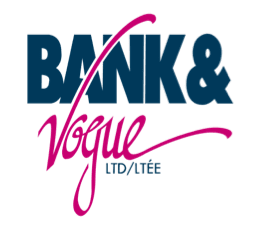Our FAQs
Wholesale used clothes refer to used garments that are sold in bulk at lower prices to retailers, businesses, or individuals who intend to resell them.
The used clothing is collected by for-profit organizations such as private collectors and non-profit organizations such as charities. These garments are sold in bulk to thrift stores, retailers, and graders worldwide. These textiles are usually sold in three different types of packaging: Loose, Baled, and Capsacks. A typical order at Bank and Vogue will be a 40′ High Cube Container or a 53′ Trailer with a minimum of 40,000 lbs of textiles.
Wholesale Used Clothing can be bought directly through Charities, Private Collectors, or Brokers such as Bank and Vogue. The main advantage of working with a full-service brokerage operation like Bank and Vogue is that you can access multiple loads from different locations at the correct market price. Apart from that, the customer will receive support regarding logistics and, in some cases, short-term financing.
If you are starting in the industry, we recommend buying small quantities in your local market until you can sort at least 40,000 lbs of textiles a month. Once you reach that scale, you are ready to buy a 40 HC Container or a 53 Trailer of textiles. You will need a Tax ID and a Resale Certificate if you are based in the United States. If you are based outside the United States and planning to import a 40 HC Container, you will need a customs agent to help you with the clearance process in your end market.
Finding wholesale used clothing vendors can be tricky, but you can find these vendors:
- At trade shows
- Online
- Through directories
- Via social media like LinkedIn and Facebook.
Finding these can be tricky because there needs to be an element of trust. It is also not easy to access the high-yield loads and best locations.
You can start right here with B&V, where we can provide you with advice regarding products, locations, prices, logistics, and warehousing.
Preferably, we suggest donating the clothing to a charity that supports your community. These organizations create thousands of jobs for people who have difficulty finding work and carry out activities to support the neediest people in your community.
There are several online platforms where you can buy second-hand clothes in the United States. Some popular options include:
ThredUP – ThredUP is one of the largest online thrift stores offering a wide selection of secondhand clothing for women, men, and children.
Poshmark: Poshmark is a social marketplace where you can buy and sell second-hand clothes, shoes, and accessories. It is known for its wide selection and interactive community.
The RealReal: The RealReal specializes in luxury consignments and offers authentic pre-owned designer clothing, accessories and jewelry.
Etsy: Etsy is known for its vintage and handmade items, including clothing. You can find a wide range of vintage clothing and accessories from various sellers.
Facebook Marketplace: Facebook Marketplace allows users to buy and sell a variety of items, including clothing. You can often find local vendors offering second-hand clothing at affordable prices.
Secondhand Clothing: This is a general term used to describe items that were previously owned or worn by someone else before being resold.
Vintage: Vintage clothing generally refers to items that are at least 20 years old, but the term can also encompass secondhand clothing that has a timeless or nostalgic quality.
Gently Used: This term indicates that the garment has been worn before but is still in good condition, with minimal signs of wear.
Pre-loved: This is a more sentimental term used to describe secondhand items, emphasizing the idea that they were appreciated by their previous owners.
Resale Clothing: Resale clothing refers to items that are sold again after being previously worn or owned.
Second-hand stores are called Thrift Stores within the United States. However, there are other retail concepts such as vintage stores that specialize in selling clothing, accessories and other items that are considered to be of a certain age, generally at least 20 years old. While vintage stores typically sell secondhand goods, they may focus more on curated or collectible items.






